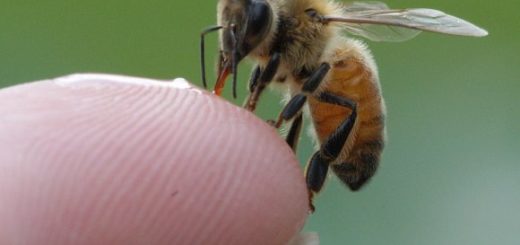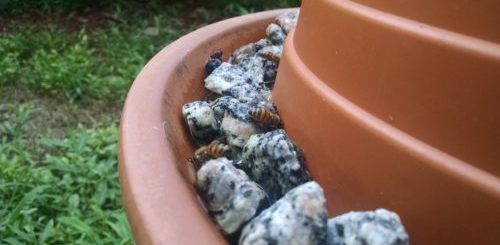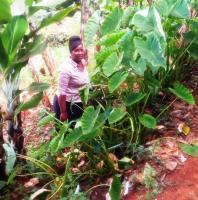Bee Friendly Planting Tips for Southeast Atlanta
I am fortunate enough to live in an area where neighbors are extremely supportive of beekeeping; alerting keepers to mosquito treatment/spraying, swarms and eagerly purchasing local honey. Recently, I was asked about bee friendly planting and concerns about foraging bees. While, there are volumes published online on the topic in general, this one goes out by request specifically to my neighborhood… inside-the-perimeter Atlanta.
Dangerous Plants
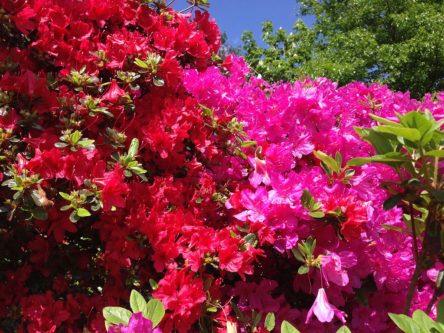 Azalea
Azalea
Yup, one of the most popular ornamental shrubs in the Atlanta area is also one of the least honey friendly. Azalea honey is toxic to humans. Thankfully, even when presented with azaleas for nectar forage honeybees seem to prefer other plants (butterflies, bumblebees and hummingbirds step up to fill the pollinator niche in this case), and small amounts of azalea nectar that honeybees do collect is usually so heavily diluted as to be harmless to humans. So as long as there are more popular choices nearby and the area is not an azalea mono-culture, honeybees and their honey are usually fine.
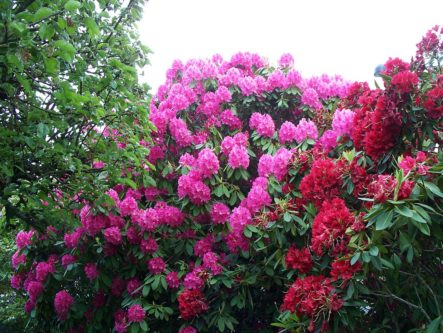 Rhododendron
Rhododendron
Like its cousin, the azalea, rhododendrons are not honeybee friendly. It can actually kill the bees, and make humans seriously ill. There is even a very rare condition called “Mad Honey Disease”. Luckily, honeybees seem to tend to avoid rhododendrons but may feed on it if they don’t have better options and are desperate.
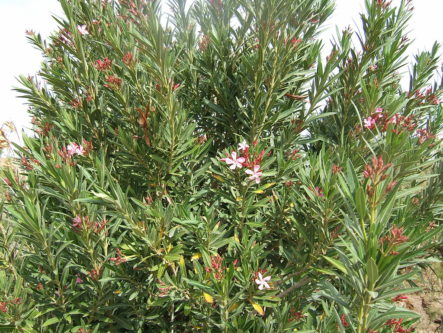 Oleander
Oleander
Vigorous and resistant to many insects and herbivores, Oleander is sometimes chosen as ornamental shrub in parks and gardens. Unfortunately, this comes at a price as it is toxic to honeybees and many butterflies as well. Its toxins are persistent and become concentrated in the hive, killing large numbers of bees throughout their life cycle.
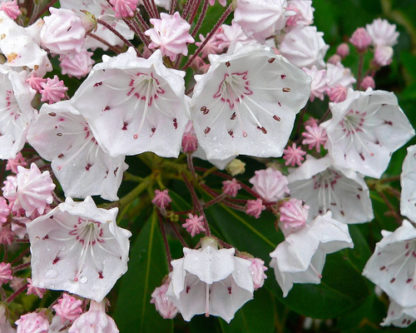 Mountain Laurel
Mountain Laurel
Very common along in the Eastern United States from New England to Georgia, these shrubs can become huge and crowd out competitors. With its evergreen nature and lovely flowers, it can be a popular landscaping choice for many, but every single part is poisonous to a wide variety of animals. Honey made from Mountain Laurel tends to be bitter and usually discourages consumption before reaching levels fatal in humans. Bees seem unaffected by this toxin but too much Mountain Laurel forage can ruin a honey harvest for humans.
 Neonicotinoids
Neonicotinoids
A broad, persistent and powerful insecticide, that is harmful to honeybees and some other beneficial insects. Many people are not aware of its complications, because it is sometimes marketed as “natural” due to its chemically similarity to naturally occurring nicotine. The complication comes when well-intentioned consumers purchase bee-friendly plants from nurseries and other sources that have been treated with Neonicotinoids to protect them from insects. Because the Neonicotinoids can last a long time, the newly introduced plants attract and then poison local honeybees. Among bees, it has a particularly insidious effect. Instead of killing outright, it retards the bees’ ability to foraging, learn and navigate to and from flowers and the hive. Lost bees die of exhaustion, unable to return to the hive and the hive is progressively weakened, opening it up to other threats. To avoid this Neonicotinoids, read nursery labels closely, inquire about distributor and retailer practices, purchase/replant existing local plants and consider shopping at certified/trusted organic dealers.
MYTH: If a plant is toxic, honey made by bees feeding on its nectar and/or pollen will also be toxic. Not necessarily! Toxins in many plants serve specific purposes and are only located in the part of the plant where it serves that role (toxic leaves to deter herbivores, for example).
So what can I plant?
The following are particularly bee-friendly, providing high quality nectar and/or pollen. Not a comprehensive list so feel free to add more!
Annuals:
- Asters
- Buckwheat
- Calliopsis
- Clover
- Dandelions
- Marigolds
- Poppies
- Sunflowers
- Zinnias
Perennials:
- Alfalfa
- Buckwheat
- Buttercups
- Clematis
- Cosmos
- Crocuses
- Dahlias
- Echinacea
- Foxglove
- Geraniums
- Germander
- Globe Thistle
- Hollyhocks
- Hyacinth
- Lavender
- Rock Cress
- Roses
- Sage
- Sedum
- Snowdrops
- Squills
- Tansy
- Yellow Hyssop
Garden Plants:
- Blackberries
- Cantaloupe
- Cucumbers
- Gourds
- Peppers
- Pumpkins
- Raspberries
- Squash
- Strawberries
- Watermelons
- Wild Garlic
Herbs:
- Bee Balm
- Borage
- Catnip
- Coriander/Cilantro
- Fennel
- Lavender
- Mints
- Rosemary
- Sage
- Thyme
Shrubs:
- Blueberry
- Butterfly Bush
- Button Bush
- Hawthorn
- Heather
- Honeysuckle
- Indigo
- Privet
Trees:
- Alder
- American Holly
- Basswood
- Black Gum
- Black Locust
- Buckeyes
- Catalpa
- Eastern Redbud
- Fruit Trees
- Golden Rain Tree
- Hawthorns
- Hazels
- Linden
- Magnolia
- Maples
- Mountain Ash
- Sourwood
- Sycamore
- Tulip
- Poplar
- Willows

